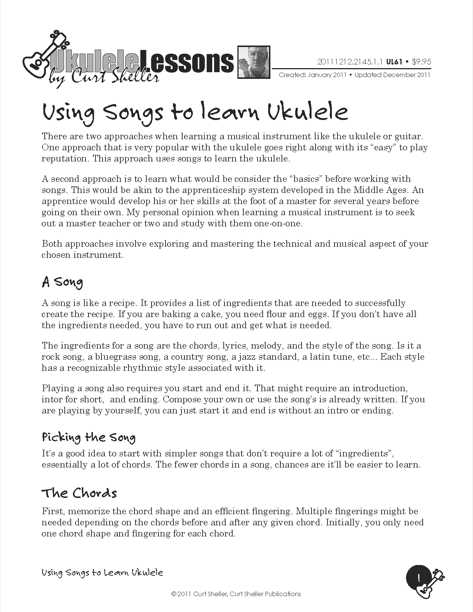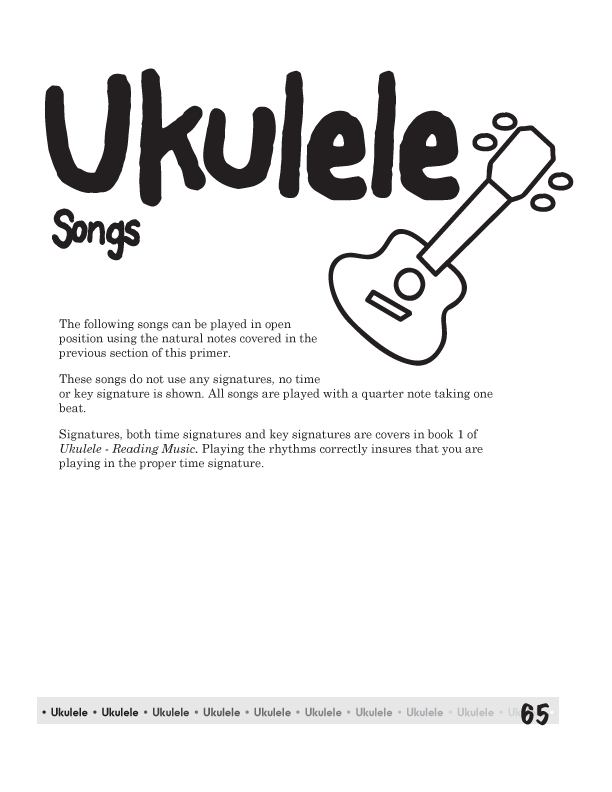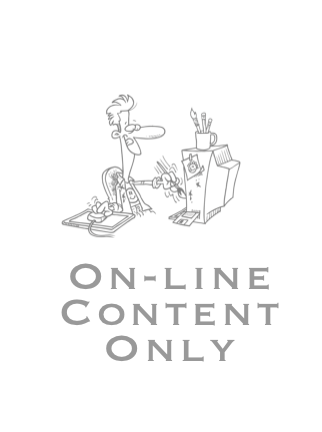
There are two approaches when learning a musical instrument like the ukulele or guitar. The first approach and one that is very popular with the ukulele goes right along with its easy to play reputation. This approach uses songs to learn the ukulele. A second approach is to learn what would be consider the the basics before working with songs.

Traditional key signatures provide a wealth of information that can enhance our understanding of music and its underlying principles.

Two Feel, bVImaj7 bIImaj7, Basie Ending, Single, Double and Triple Tags, Chromatic, Take 'A' Train Ending, Shave and a Hair Cut, Lawrence Welk Ending. These are common classic songs ending that are used over and over in the standard song repertoire.

Introductions are a composed or improvised pieces of music that introduce - sets the stage for - a song or composition. Introductions, or intro for short, are used in all types of music. In this lesson, the focus is on introductions in contemporary pop, rock, blues, country, folk and jazz styles.

Using the jazz standard "All of Me" to explore jazz chords on ukulele.

Using the jazz standard "All of Me" to explore jazz chords on ukulele.

Using the jazz standard "Autumn Leaves" to explore jazz chords on ukulele.

Using the jazz standard "All the Things You Are" to explore jazz chords on ukulele.

Using the jazz standard "The Days of Wine and Roses" to explore jazz chords on ukulele.

Using the jazz standard "There Will Never Be Another You" to explore jazz chords on ukulele.

Using the jazz standard "Back Home in Indiana" to explore jazz chords on ukulele.

Using the jazz standard "Someday My Prince Will Come" to explore jazz chords on ukulele.

Using the jazz standard "Have You Met Miss Jones" to explore jazz chords on ukulele.

Using the jazz standard "Summer Samba" to explore jazz chords on ukulele.

Using the jazz standard "Sweet Georgia Brown" to explore jazz chords on ukulele.

A variation of the previous lessons using the jazz standard "Sweet Georgia Brown" to explore jazz chords on ukulele.

Using the classic Beatles cone by Paul McCartney "Yesterday" to explore jazz chords on ukulele.

Using the jazz standard "It's Only a Paper Moon" to explore jazz chords on ukulele.

Using the jazz standard "Take the A Train" to explore jazz chords on ukulele.

Using the jazz standard "Satin Doll" to explore jazz chords on ukulele. This also a great song for an introduction and exploring the very common, "II V" harmonic cell.

A variation using the jazz standard Satin Doll to explore jazz chords on ukulele.

Common Jazz Chord Progressions - there is a lot more common between songs than you might think. This lessons show some common progressions and the jazz standards that use them.

The following songs can be played in open position using the natural notes covered in the previous lessons of this primer. These songs do not use any signatures, no time signature or key signature is shown. All songs are played with a quarter note taking one beat.

The "Andalusian" cadence is a term adopted from flamenco music for a chord progression comprising four chords descending stepwise. It is otherwise known as the minor descending tetrachord. Traceable back to the Renaissance, its effective sonorities made it one of the most popular progressions in classical music.

In jazz and jazz harmony, the chord progression from IV7 to bVII7 to I has been nicknamed the backdoor progression or the backdoor II-V. This name derives from an assumption that the normal progression to the tonic, the II-V-I turnaround (II-V7 to I, see also authentic cadence) is, by inference, the front door. It can be considered a minor plagal cadence in traditional theory.

The twelve bar blues and its many variants use an elongated, three-line form of the I - IV - V chord progression that has also generated countless hit records, including the most significant output of rock and rollers such as Chuck Berry and Little Richard.

Another common way of extending the I - IV - V sequence is by adding the chord of the sixth scale degree, giving the sequence I - vi - IV - V or I - vi - ii - V, sometimes called the 50s progression.

Diatonic scales such as the major and minor scales lend themselves particularly well to the construction of common chords because they contain a large number of perfect fifths. Such scales predominate in those regions where harmony is an essential part of music, as, for example, in the common practice period of western classical music.

Three-chord tunes, though, are more common, since a melody may then dwell on any note of the scale. Often the chords may be selected to fit a pre-conceived melody, but just as often it is the progression itself that gives rise to the melody.

This is the most popular chord progression in use today. It has replaced the most common chord progression that was used in the 50s, the 1 6 2 5 chord progression.

An overview of the Ukulele Chords and Chord Progression lessons available.

"Hearing The Changes" is knowing what the chords of a song or chord progression are and when they change. This lesson gets you on the road to developing this ability. This involves know the chords of the keys and scales that are used for common progressions and songs. And the ability to recognize the sound of intervals, the distance between intervals.




.jpg)